This pipe came to me via a recent eBay auction all the way from Israel. I usually try to stay a bit closer to home in my buying, but the prospect of adding a new Patent Era pipe shape to my Brigham collection had my mouse hand clicking “Bid Now” on this one.
The seller had taken some decent pictures, and the pipe appeared to be in good tick, especially for one that could well be in its seventies. The pics showed an octagonal rusticated bowl with smooth rim and round shank. The stampings on the bottom of the stummel were worn and very faded, but the “273” shape number, along with the last 4 digits of the patent number and the “B” of the Brigham logo were enough to identify the piece as a a Brigham 200 series pipe dating from 1938-1955.
As you can see from the seller’s pictures, the pipe stem is an obvious replacement. It is missing the telltale Brigham dots, or brass pins, on the left side, as well as the patented Brigham rock maple filter system. This stem was fitted with a thick spiral stinger instead. By some stroke of luck, I actually had a new-old-stock Brigham stem in my stem box, though without the pipe in hand I had no way of telling if it would fit.
My assessment of the pipe’s condition was confirmed when I eventually received it in the mail. The stummel should clean up easily, but would my NOS stem suit the pipe? Again, the Pipe Restoration Gods smiled upon me – the stem was the right length and the tenon fit the mortise! Here is a pic of the stummel with both stems.
I didn’t want to fit a stem to a dirty stummel, so I started by giving the briar a good scrub inside and out. I used my Castleford reamer to cut back the cake in the bowl and finished up with sandpaper wrapped around a Sharpie. The bowl was smooth and in great condition.
I cleaned the exterior of the stummel with Murphy’s Oil Soap and a toothbrush to banish the grime of ages from the rustication, and then applied a fair amount of energy to clearing the tars and other nasties from the shank. A Brigham pipe, when used with the rock maple filter in place, stays remarkably clean compared to one used without. In this case, the difference was extreme, as the aluminium stinger had condensed most of the tars, oils and other assorted gunk inside the shank. It took a healthy pile of cleaners and cotton swabs dipped in alcohol to restore the shank to a useable state.
To make extra sure I’d gotten all the tars out of the stummel as well as deodorize and sanitize the bowl, I packed the bowl and shank with cotton balls and filled it up with alcohol. Sitting overnight, the alcohol penetrates the briar, dissolves the internal gunk and pulls it into the cotton balls for easy disposal. This task could have been accomplished quickly with a retort, but I don’t have one yet (it’s on order!).
While the bowl sat and steeped in its cotton balls, I gave the stem a basic clean-up as well. I would be replacing this stem with the proper Brigham stem, but I’ll hold onto this one to reuse on another project. I didn’t want a dirty stem stinking up my stem box.
With everything fresh from the cleaning, I moved on to fitting the new stem. I always do this with a Brigham filter in place in the stem, as it increases the effective length of the tenon/filter holder. This stem slid neatly home into the mortise. It would only need minor adjustments to fit perfectly. I used 220-grit paper to sand off the molding marks where the two halves of the stem were joined. I also sanded the shank/stem junction to achieve a smooth flow down the length of the pipe. I touched up the finish on the shank with a quick wipe of a stain pen.
All that was left was to pin the stem as a 2-Dot. The NOS stem came with one brass pin factory-installed. This pin actually penetrates the end of the aluminum tenon, helping to secure the tenon/filter holder in place. I added the second pin by drilling a 1/16” hole next to the factory pin and with a drop of CA glue, installed a short section of brass rod into the hole. When the glue was cured, the pins were filed down and sanded flush to the surface of the vulcanite. This picture shows the dots in place and sanded smooth. You can see that I slipped a bit with my file and made a dent between the pins. I’d have to go back and fill that in with CA glue and charcoal powder.
With the stem work accomplished, I smoothed and polished the stem and the rim of the pipe with micromesh sanding pads from 1800-4000 grit. This erased any sanding marks left on the stem and brought up the shine considerably.
Then it was off to the buffer for a course of White Diamond compound and multiple light coats of Carnauba wax. This old panel billiard has exceeded my expectations. I wasn’t sure if I would be able to fit a genuine Brigham stem or be forced to recondition the replacement stem that came with it. I’m happy to have been able to bring this Toronto-born pipe home from its stay abroad, and to see it dressed in its brass dots once more. The combination of panel bowl and round shank is unique on this 273. It will make a nice addition to my growing collection of vintage Brighams.
Here’s the finished pipe. Thanks for looking and Happy Piping!


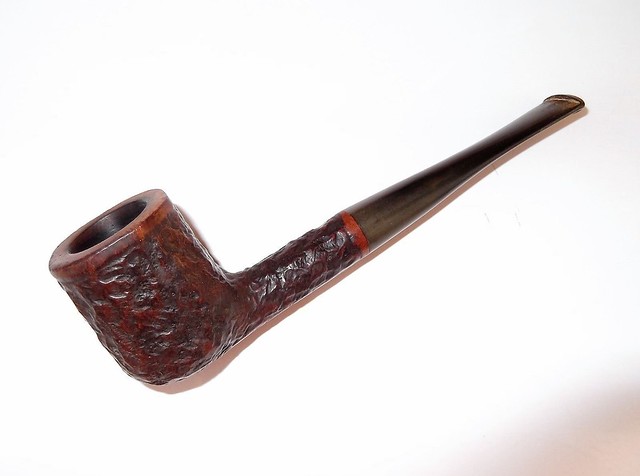

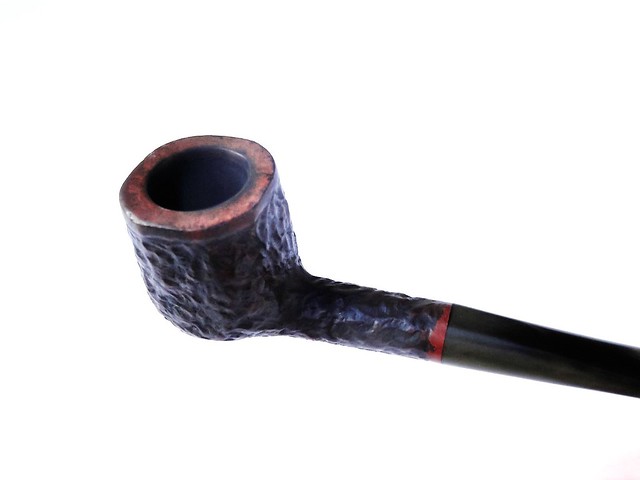
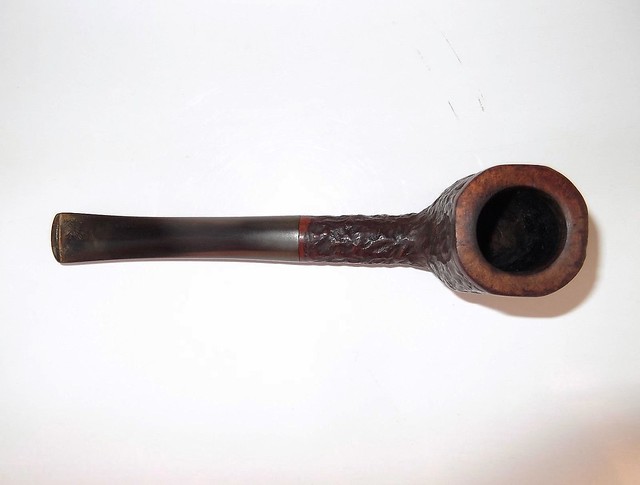
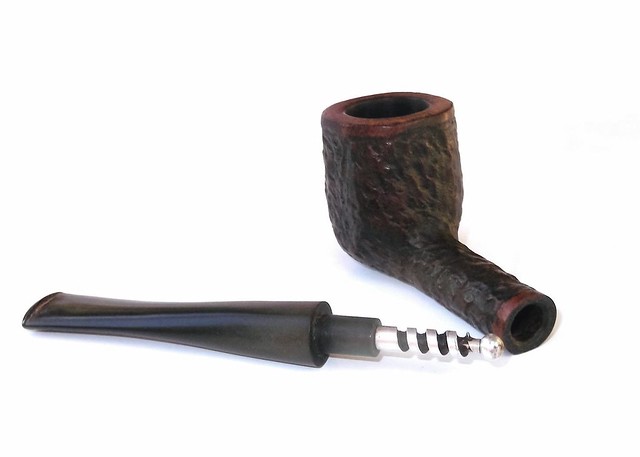

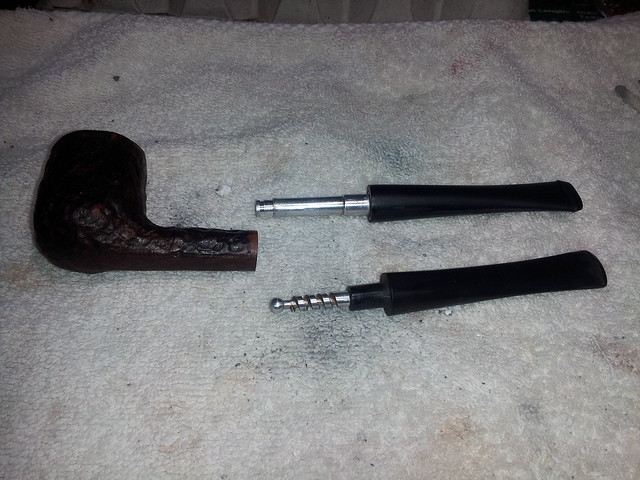

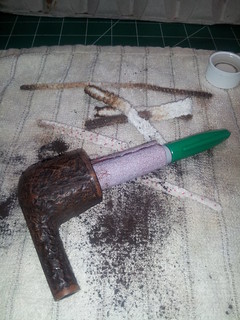
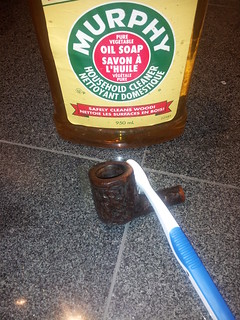
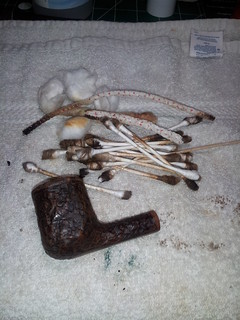
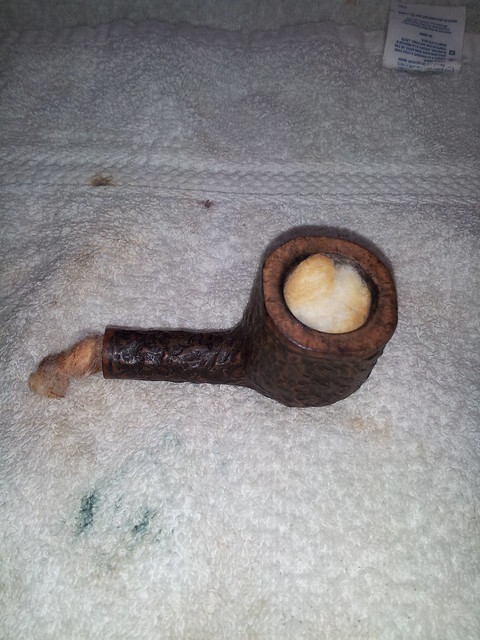
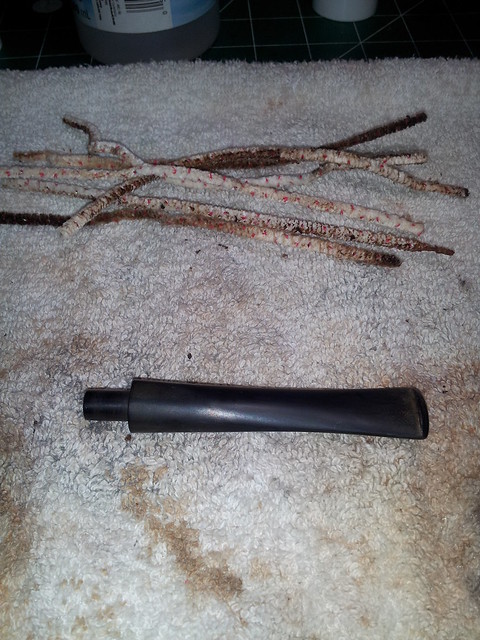

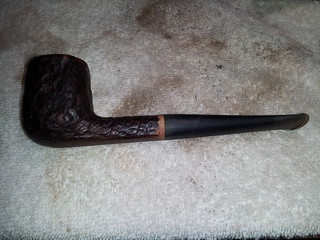
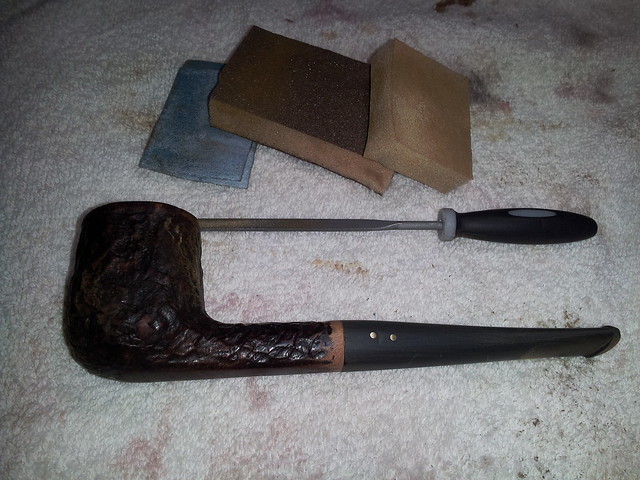
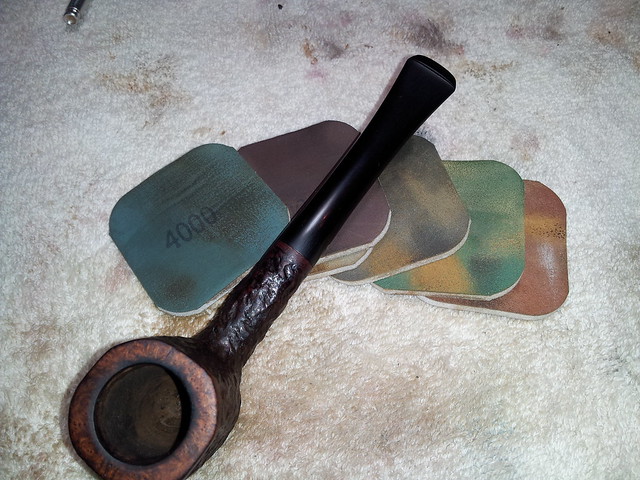
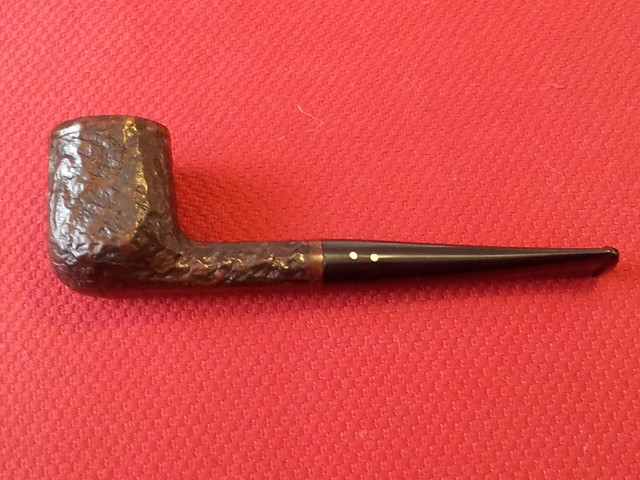
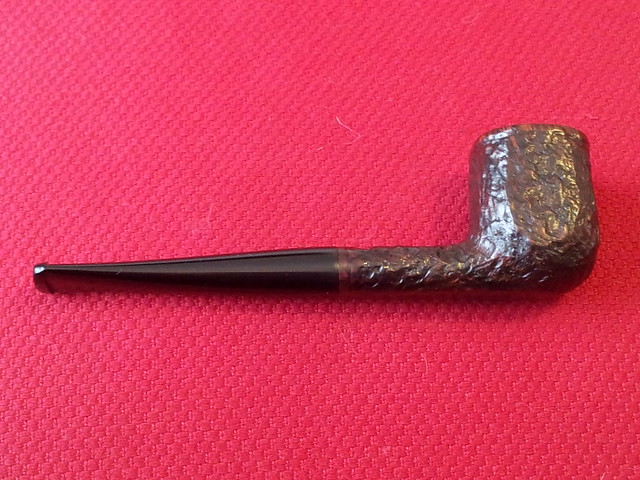
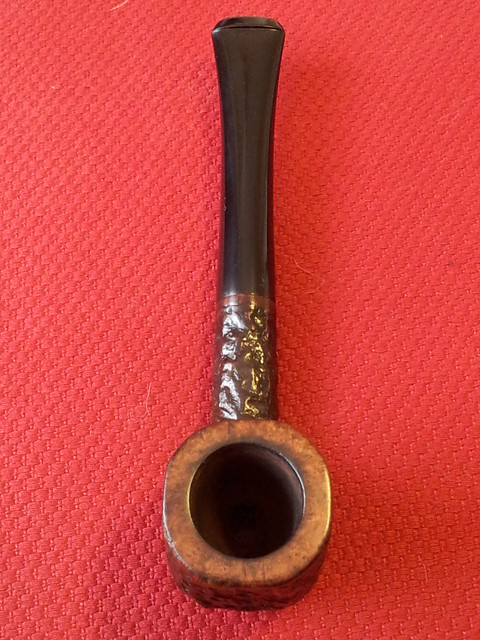
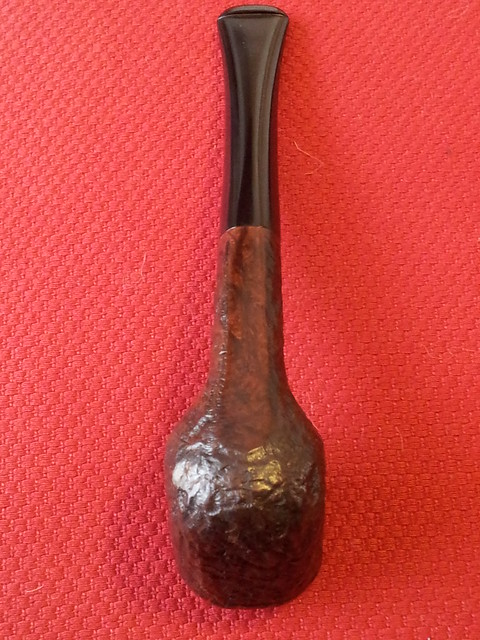
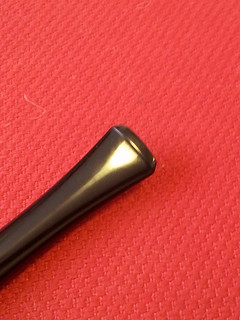
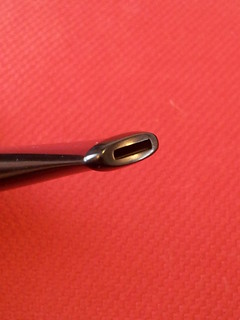
great job on the stem profile- perfect!
LikeLiked by 1 person
Thanks, Al. A factory stem does a lot of the work for you This one needed only a little tweaking.
LikeLike
Very good job. As the other Al said, perfect!
LikeLiked by 1 person
Thanks! This one was fun to work on. Wish I knew how it had ended up in Israel, though – there’s got to be a good story there somewhere 😉
LikeLike